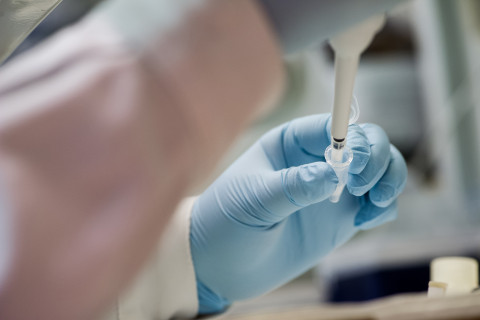Acute elevation in certain plasma microRNAs (miRNAs), along with downregulation of the clusterin protein within 2 days post-injury can act as early diagnostic and prognostic biomarkers for traumatic brain injury, according to the doctoral dissertation of Shalini Das Gupta, MSc.
Traumatic brain injury (TBI) occurs when an external mechanical force is inflicted on the brain, resulting in an alteration or disruption of normal brain functioning. Based on the injury severity, TBI is classified as mild (mTBI), moderate, or severe (sTBI). Due to the heterogeneity and complex pathophysiology of TBI, specific, affordable, and widely accessible diagnostic and prognostic biomarkers for better diagnosis and timely treatment of TBI patients are currently unavailable. Particularly, the diagnosis of mTBI is complicated as CT findings often remain negative and the patients only suffer from subtle neurobehavioural deficits. Further, most of these patients recover relatively fast, with only about 30% of the patients complaining of persistent chronic symptoms.
Blood-based biomarkers hold potential for non-invasive diagnosis, prognosis, and identification of patients at risk of developing chronic secondary pathologies post-TBI. Experimental animal models play a very important role in advancing such biomarker research as the brain injury can be specifically modelled, controlling for the heterogeneity and varied comorbidities that are typically associated with the patient population. Molecular biomarkers involve a wide range of molecules from nucleic acids to proteins, that are typically detected from the tissue and body fluids. The identification of molecular biomarkers for TBI is especially crucial for diagnosing patients who present with no visible structural damage to the brain. In addition, molecular biomarkers hold potential for elucidating the ongoing pathological progression in the brain at the molecular level, and in predicting the clinical outcome after TBI.
The levels of several microRNAs increased with injury severity
In this thesis, the lateral fluid percussion injury (FPI) model was used to induce TBI in adult, male Sprague-Dawley rats. At 2 days post-TBI, blood and plasma levels of the brain-enriched miR-124-3p levels were found to be elevated in the rats with TBI in comparison to the experimental controls. Further, a linear relationship was observed between the plasma miR-124-3p levels, and the cortical lesion area developed in these rats, that is, higher the miR-124-3p level in plasma at 2 days post-TBI, larger was the cortical lesion area developed at 2 months after TBI. Further, at 2 days post-TBI, elevation in plasma miR-9a-3p, miR-136-3p, and miR-434-3p levels were also identified in the rats with TBI in comparison to the controls. The plasma levels of these miRNAs increased with a corresponding increase in injury severity, with lowest levels in naïve rats and increasing levels in this order: experimental controls undergoing surgery but without TBI impact, rats with mTBI impact and rats with sTBI impact. Importantly, a subpopulation of human mTBI patients also exhibited elevated plasma miR-9-3p and miR-136-3p levels within 2 days after injury. These patient plasma samples were obtained in collaboration with the Kuopio University Hospital.
In the final study, the clusterin protein was found to be elevated in the injured brain areas of the rats with lateral FPI, whereas it was downregulated in plasma at 2-6 hours post-TBI.
Taken together, these findings indicate that altered plasma levels of specific miRNAs and proteins can act as diagnostic and prognostic biomarkers for injury severity and chronic brain lesion development. These biomarkers also hold translational potential in human patients with TBI.
The doctoral dissertation of Shalini Das Gupta, Master of Science, entitled “Circulating plasma biomarkers of traumatic brain injury. Focus on the plasma levels of miR-124, miR-9, miR-136, and miR-434 as well as clusterin protein”, will be examined at the Faculty of Health Sciences. The Opponent in the public examination will be Professor David C. Henshall of the Royal College of Surgeons in Ireland, and the Custos will be Professor Asla Pitkänen of the University of Eastern Finland. The public examination will be held online in English on 30 June 2021 starting at 12 noon.



